
Max Cage is the heroic alter ago of the mild-mannered reviewer and commentator of comics, crime and all manner of pulp. He knows you have better things to do than read his musings but can’t imagine exactly what that could be.
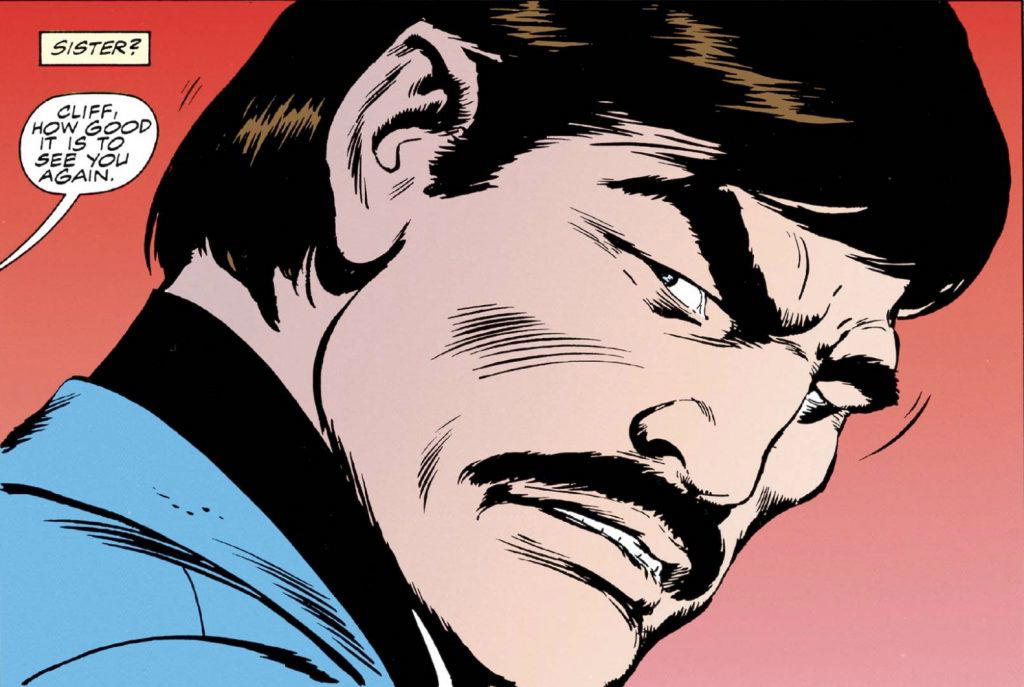
I grew up in the 1980s, in the lengthening shadow of the Vietnam War and well before the days of mobile phones and the Internet. I was deeply into action movies and adventure fiction at a time when a booming entertainment sub-genre had been established around the mythology of The ‘Nam. Not specifically war storytelling, but just as this war was the first to be televised, thus shaping our visual understanding of action and modern combat, it also gave us an update to the American tough guy template. The WWII/Korea ‘stoic veteran’ archetype was giving way to the ‘Nam vet, with all the toughness and badassery, but hairier, stringier and laced with equal parts LSD and PTSD.
We were far enough removed from Vietnam that the more romantic versions were being immortalized, even if all versions tended to include criticism. In fact, Marvel was able to sustain a monthly war comic, The ‘Nam, for seven years, an extraordinary feat so long after the demise of war comics as a viable genre. While I didn’t read that title, stories about Vietnam (and more frequently, Vietnam vets) were in my orbit just as much those featuring ninjas, private eyes and grim survivors stalking post-apocalyptic wastelands.
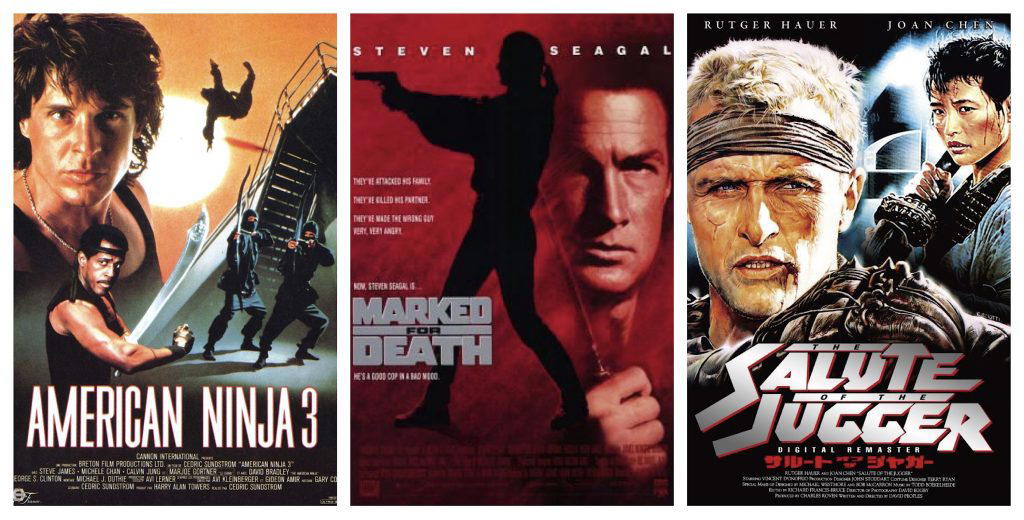
‘Nam vets specifically were actively inspiring a significant portion of the characters whose adventures I consumed, from Magnum, P.I. at one end of the spectrum to Mack Bolan at the other; Don Pendleton’s relentless Executioner himself, and his comic-book successor, Frank Castle, the Punisher. There was a new level of cynicism to the post-Vietnam tough-guys that makes this a Golden Age for the antihero, before the changing times required a further evolution of character complexity that ultimately brought us folks like Jackson Teller and Vic Mackey.
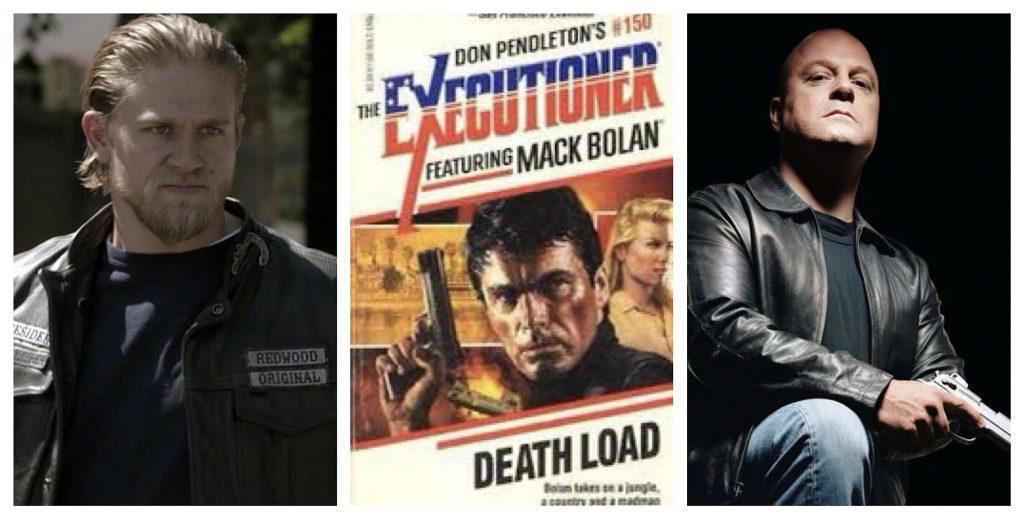
The action movie diet that my friends and I gobbled down was drenched with jungle warfare and its natural 80s extension, tales of lone wolves battling The Mob. It seems that a lot of vets came back Stateside and went vigilante, or otherwise came up against organized crime and then fell back on their battle skills to overcome adversity. These hundred-odd-minute testosterone/adrenaline festivals were rented from the corner store as often as from actual video places, watched on VHS tapes in cardboard sleeves or those puffy plastic clamshells. (VHS or Beta, since my friend and I each had one format — #lifehacks). 80’s action movies were the video version of ‘men’s adventure fiction’, sort of a technical evolution of the old Gold Medals and other paperback originals (themselves an evolution of my darling, the pulp genre).
Aside from The ‘Nam, in a comics market dominated by superheroes you didn’t see many ‘Nam vet-inspired characters outside of supporting roles, but at the time it was a central feature of the previously mentioned Frank Castle. You get where I’m going here?
Comics’ll Break Your Heart this month is all about the Punisher. What better time than now, when the character’s very stylized skull trademark has itself become a polarizing image (and I can’t believe I am saying this about the post-Nixon, post-Vietnam, Iran-Contra era!) to return to a more innocent time. Let’s enjoy the fact that the only politics our vigilante hero will become embroiled in through this story are those of a fictional South American dictatorship
A bit of housekeeping, because it would be arrogant to assume that since you’re reading this column you have a similar pop-culture baseline; the Punisher is Frank Castle, family man, decorated Marine and ‘Nam vet, who loses his family to Mob violence and dedicates his life to, well, punishing crime. He is Batman as imagined by Marvel in the gritty Death Wish 1970s, a mess of rage and emotional trauma driving him into a controlled madness from which he hunts and punishes criminals with varying levels of lethality depending on the needs of the story. Humorless, black-clad and sporting his skull emblem while toting an impressive armory, the Punisher is a soldier in an army of one, waging an un-winnable war.
There’s more to the lore, but that’s the core of the character. The Punisher’s popularity was enormous in the late 80s/early 90s and Marvel was publishing no less than three monthly comic series featuring him, not to mention guest appearances, graphic novels and mini-series, and a major motion picture starring Dolph Lundgren!
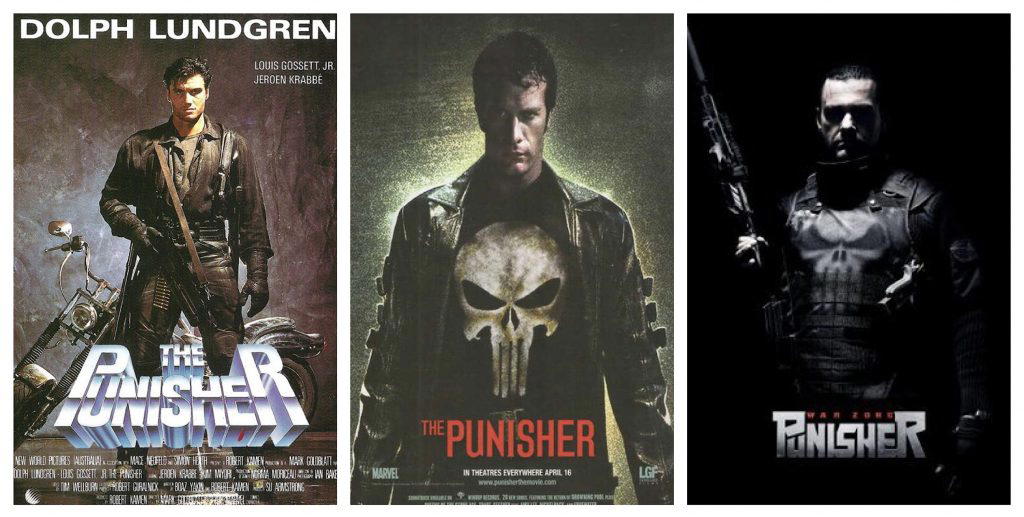
Future interpretations of the character would involve (in no particular order) dark comedy, gratuitous hard-R violence, superhero satire, a turn in stolen Iron Man armor, semi-religious fantasy with a violent bent, quasi-mythological fantasy with a violent bent, and even a brief turn as Frankenstein’s Monster. He’ll growl his way through cartoons and video games and show up again in live action a bunch more, brought to life since Dolph by Thomas Jane, Ray Stevenson and Jon Bernthal.
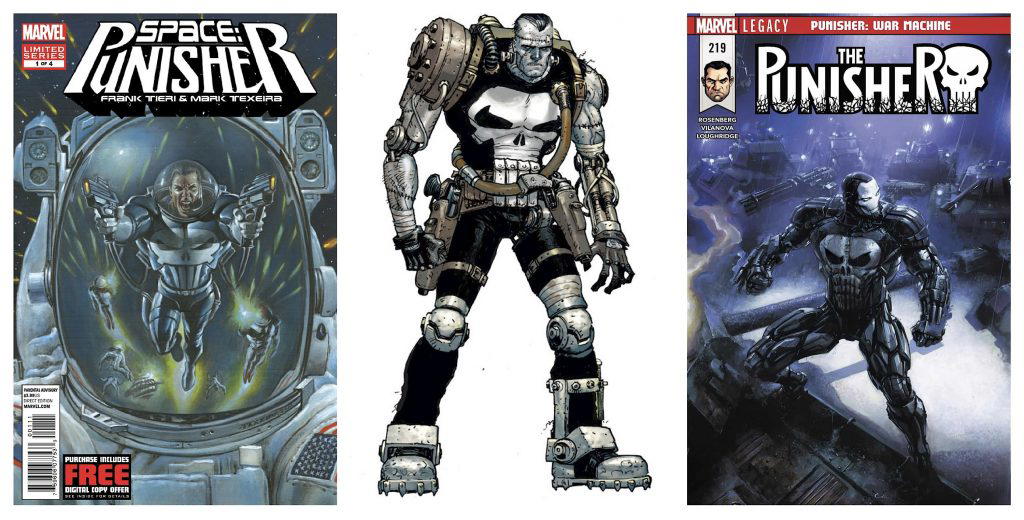
We’re here to look at an arc of The Punisher War Zone that ran in issues 26-30, in 1994. War Zone was kind of a prestige 3rd Punisher comic book doing multi-issue self-contained stories not connected to current continuity. Initially a vehicle for superstar artist John Romita Jr., later story arcs were drawn by old-school capital-L Legends Joe Kubert and John Buscema. It’s Buscema that did the art for these issues, with a small asterisk, which we’ll get to. For the most part the series was written by Chuck Dixon, another industry veteran known for his tough street-level stuff.
I’ll be honest, we’re here because of Big John Buscema.
I love the art of John Buscema — he’s Mister Marvel to me. Known for his runs on the Avengers, Fantastic Four, Silver Surfer and umpteen decades of Conan books, he’s also drawn pretty much every Marvel book and character at some point. His work on the Wolverine solo comic circa 1988 is another particular favorite of mine. John Buscema died in 2002 at the age of 75; when he was drawing the comics we’re discussing here he was in his late sixties and this work is definitely from the end of his career, lending it greater poignance. And he was still at the very top of his form, as you’ll see! That Buscema only did breakdowns for the final issue suggests that penciling and inking on a monthly schedule might have been a challenge long-term, but I’m just speculating. It could have been for any reason. Despite the art shift on the fifth chapter, this comic is a visual feast!
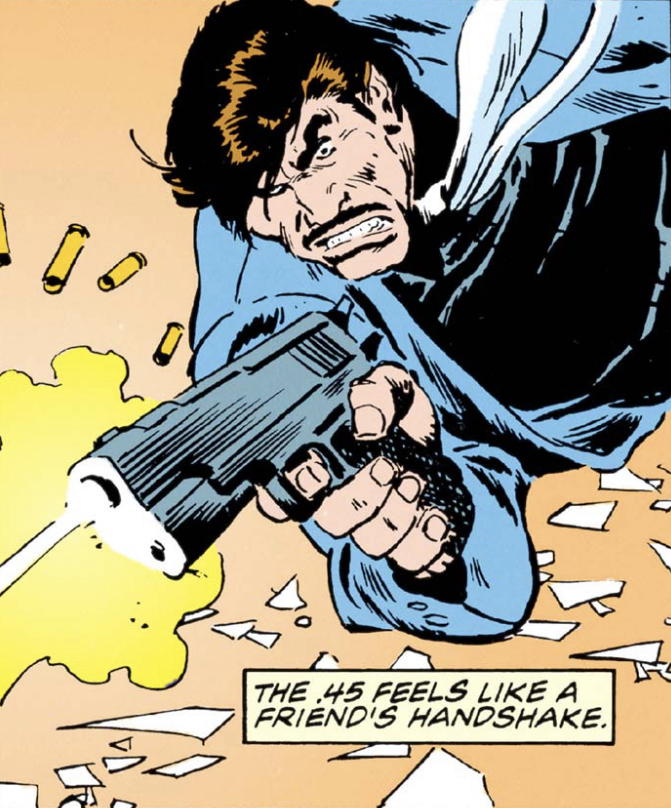
The name John Buscema, synonymous with Conan the Barbarian throughout fandom, renders a Punisher inspired by the Cimmerian savage. Knowing well who was drawing his story, writer Chuck Dixon delivered a script that played this up, taking Castle into increasingly barbaric situations. While we’re treated to the requisite gun battles, we also get plenty of up close and personal brutality.
Buscema’s action/crime characters are apish; thickly muscled, with slabs of beef layered across broad shoulders and bull necks, long, heavy forearms and massive, clubbing fists. Squinting eyes beneath brows thick with scar tissue glower from faces resembling Charles Bronson, Ernest Borgnine and James Coburn. Keeping the story solidly anchored in pulpy crime, Frank Castle is kept out of his traditional combat uniform and gear, instead wearing first a glorious skull-emblazoned guayaberas shirt and later an increasingly tattered tee-shirt. Like another 80s action icon, Frank is even barefoot for much of the tale, following in John McClane’s Die Hard shoe(lessness).
Chuck Dixon writes the hell out of the story, taking Frank Castle through a revenge odyssey littered with ‘stand up and cheer’ moments (the only reason he doesn’t fight a shark, I suspect, is because they’d already shown him fighting alligators) and ending each issue with a cliffhanger. Dixon seems to revel in brutalizing Frank, which is an approach desperately needed for a ‘force of nature’ character such as he. Only when he’s beaten down and clinically self-assessing his dwindling effectiveness do we really feel for surly, mean Frank Castle. Dixon even withholds satisfaction from Castle by revealing to only the reader the karmic justice that ultimately befalls the primary target, who’s escaped our diminished Punisher.
Chuck Dixon’s been writing comics for just about as along as I’ve been reading them, having started professionally in the mid-80s. In the 90s his was a name closely associated with the Punisher, G.I. Joe, Conan, Batman, Robin and Nightwing, all old favorites of mine, though he’s written every damn thing for nearly every publisher. The guy is a workhorse can write anything, but street-level crime-adjacent action-drama is his sweet spot and no coincidence, but it’s mine too.
Starting the 5-part adventure with an issue called “Pirates”, Dixon and Buscema set the tone by opening with a barroom brawl lovingly rendered in full splash-page glory, Frank Castle right in the middle, cracking skulls. This is the first appearance of my favorite element of this issue, Frank’s Punisher-themed cabana wear! Skull adorned! An extra button undone with manly chest thatch on full display!
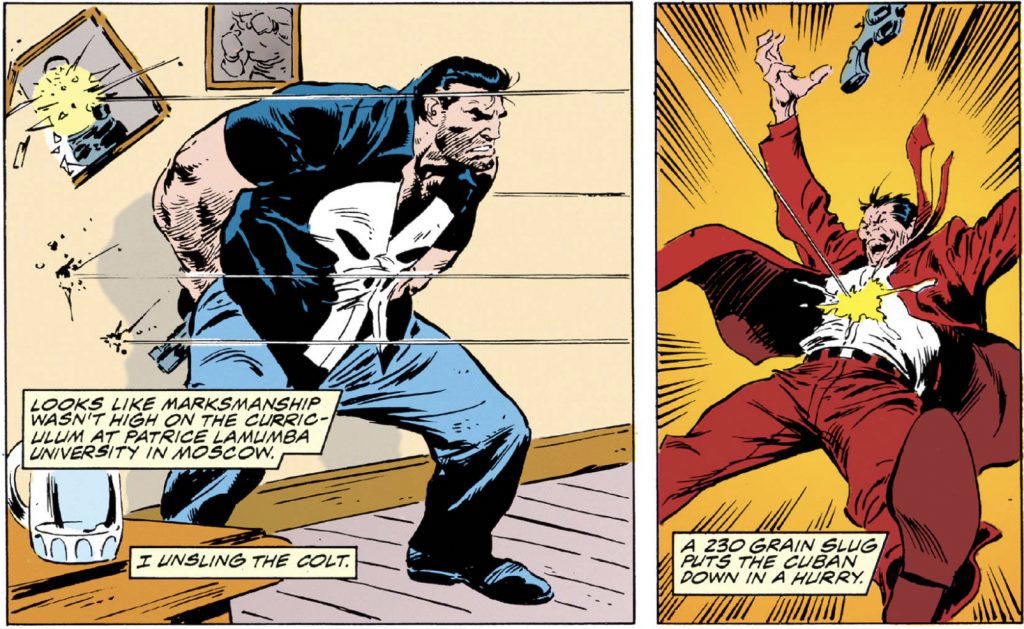
Frank’s in Florida hunting gun-runners, there’s your setup, movin’ on. He’s bemoaning the gentrification of the Keys in caption narration boxes but has found a bastion of seediness and started a fight, because that’s his investigative style. It sorta pans out and a Cuban takes a shot at him, but Frank ends him and everyone runs away, leaving even Castle himself questioning his approach. The barman, a shifty-eyed character I wish would’ve gotten a graphic novel his own self, ends up being a thorough source of intel.
This issue would be by the numbers were it not for this quiet self-awareness supporting Frank’s hard-boiled narration. In some places it’s amusing, like when he grumpily realizes that chasing everyone out of the bar doesn’t leave anyone to question, and in others it’s chilling. After finding and murdering the target while in bed with a woman, Frank basically ignores the woman until walking out with the dead guy’s papers and a suitcase of cash. He notes to the reader that he’s left her crying, then stops to throw a cold “Tough luck, babe” back over his shoulder.
Then Dixon throws the reader a figurative wink as the man whose level of subtlety is measured in a negative value decides that’s he’s going undercover! With a little wig and mustache action, Frank decides to impersonate the just-murdered Cliff Callador, gun-runner! And we’re off to Puerto Dulce! From Frank’s research:
Off the coast of Venezuela. An independent island republic. Former Portuguese colony. The rest of the stuff reads like a sixth grade world cultures report.
Castle-cum-Callador is barely off the plane before his hand is filled with a barking .45! Revolutionaries are attacking the airport and undercover or not, Frank can’t resist a gunfight. This catches the attention of the government security people (I think?) and earns him an audience with El Jefe, ascot-wearing Ernesto Villamos, government-connected old-money prick and Castle’s ultimate target in the gun-running operation!
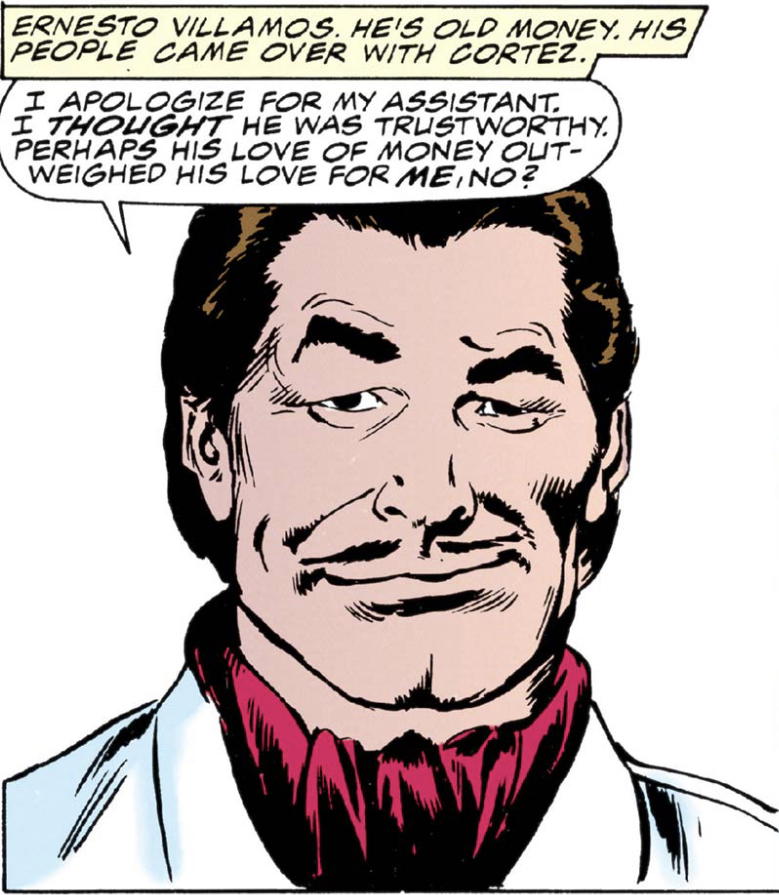
Last page reveal! El Jefe Ernesto’s sister is the woman that Frank left alive in Cliff Callador’s hotel room! Regretting that “tough luck” crack now, Frank? No, I bet he just regrets showing mercy.
That one issue alone is a roller-coaster and Dixon/Buscema are just getting warmed up! In the next issue, called “Boss Sugar”, we immediately see Frank gleefully betrayed by the sister, now identified as Carmelita.
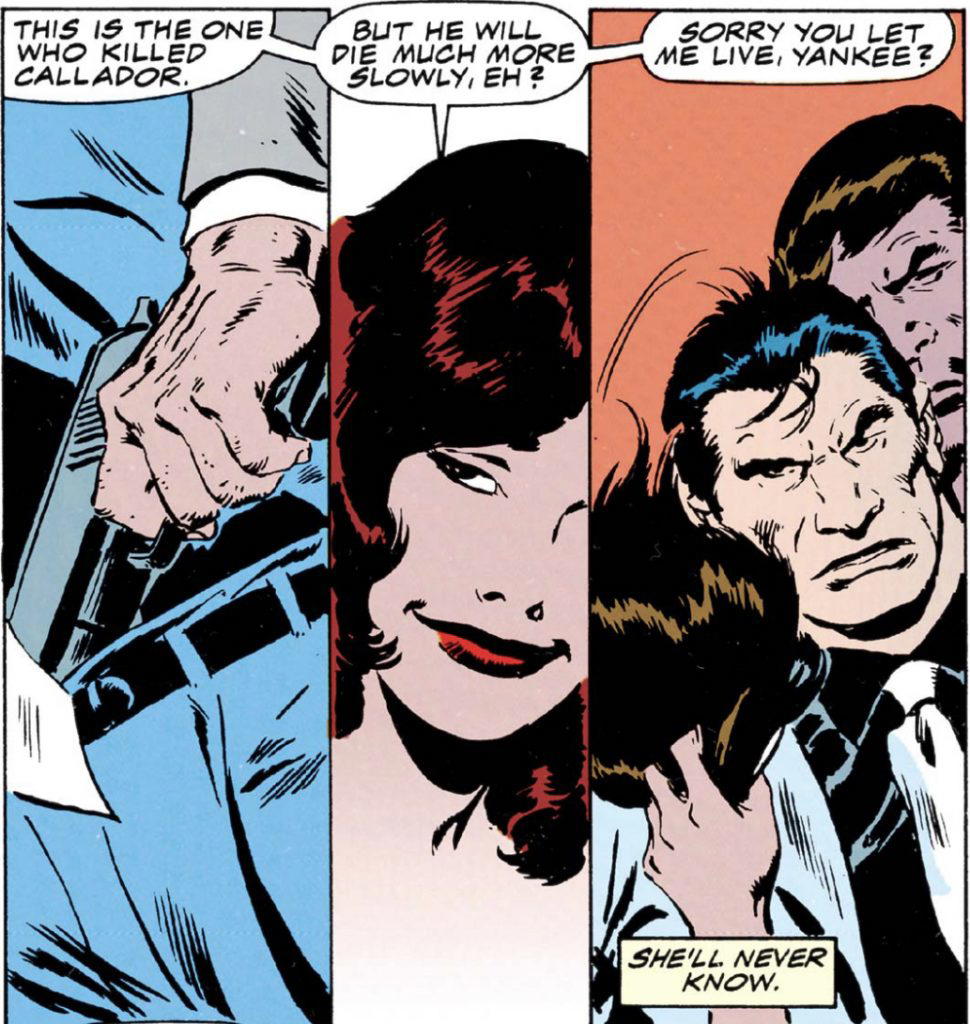
“She’ll never know.” Frank helpfully recaps the situation in tough-guy captions. This is an old-fashioned comic book thing not seen much anymore and whether you’re for or against these narration boxes, there’s no denying that they work well for this type of action pulp.
While Frank’s been revealed to be an imposter, the bad guys don’t actually know who he is or his mission. The Punisher’s not internationally famous yet, I suppose. Instead of killing him outright, they beat the hell out of him and throw him in a work camp, where he’s befriended, if you can call it that, by another prisoner, Comadreja, who Frank calls Coma. Which feels like Castle’s just reflexively a dick to everyone.
Microchip, Frank’s tech support and original “guy in the chair”, is getting antsy waiting and hires Ice Phillips to mount a rescue. Ice Phillips is another vet who Frank had met as an in-country soldier guest-starring in The ‘Nam comic. Ice is semi-retired in ‘94 but agrees to mount a rescue on a mercenary basis. That (bungled) rescue won’t come until the next issue, called “Sweet Revenge”, and not until after Frank rescues Coma, gets beaten down some more, then pressed into a banana republic Fight Club! I told you, Dixon is writing unrestrained action pulp and I am here for it!

Castle dominates even fighting three goons while balanced on crossed planks laid over a pit full of knife-sharp sugar cane stumps. Still barefoot. They even chuck the last survivor a machete, but killing is like breathing to Frank Castle. Still we hear him question his limits even as he strategizes the fight in caption boxes.
Here is where Coma’s story ends, in a particularly cold piece of business where his karmic reward for helping Castle earlier earns him not a place in the escape, but an escape of a more final sort.
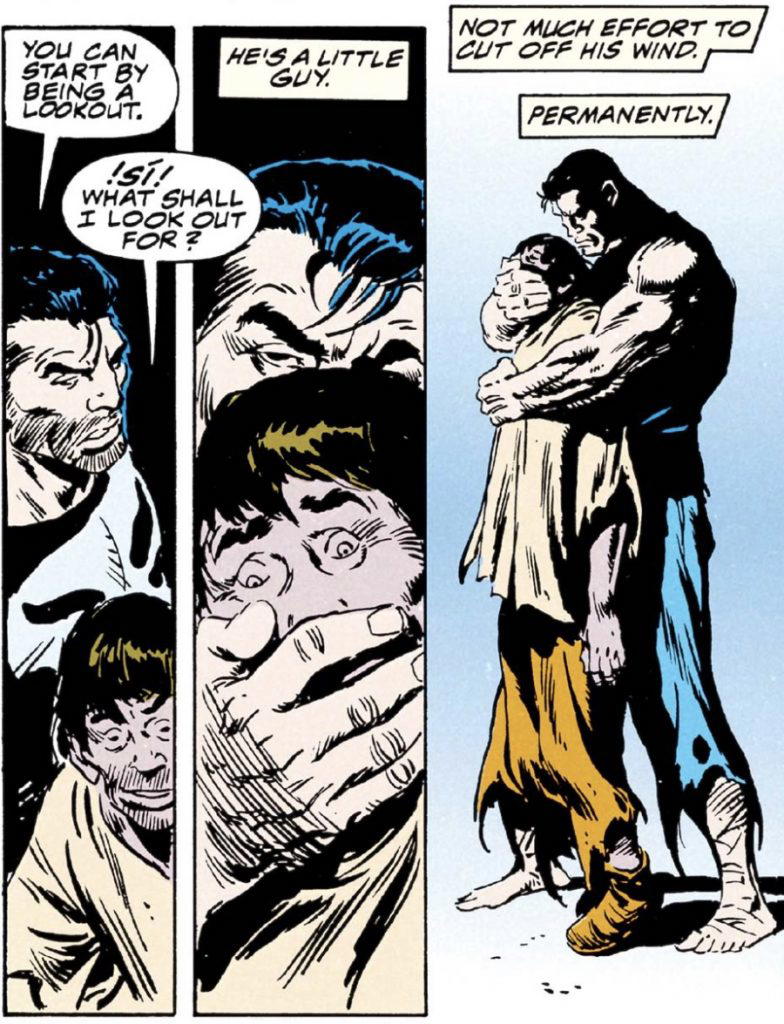
“The Swine” is the name of the penultimate issue and could refer to any number of characters we’ve been following, or the actual pig that Ice, Micro and the newly-liberated Castle follow to escape the jungle. This is after Frank fights that congregation of gators.
Turning to the fifth issue, “Ring of Fire”, what is immediately noticeable is the art change. For whatever reason, Buscema was apparently unable to complete the art for this issue on schedule and his longtime Avengers art partner Tom Palmer was brought in to work over John’s rough breakdowns. While I am deeply fond of the art pairing from many issues of Avengers, I wish this issue had shipped late and been completely Buscema like the first four. As it is, regardless of the situation behind the scenes, Palmer doesn’t seem to have been given much time to work either, and it shows. The job gets done and completes the highly entertaining pulp story, but the art’s not a highlight, especially after the solid-gold Buscema work that preceded it.
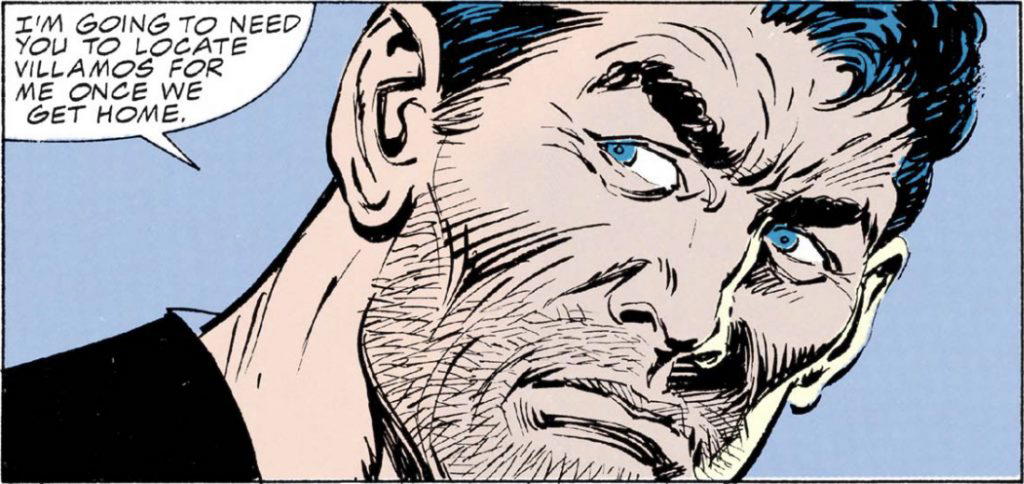
Honestly, the story that follows this one, another Dixon-penned six issues illustrated by the great Joe Kubert is just as fantastic and features consistent art. I could have a easily written about that book, collected under the title River Of Blood, and it’s grade-A fantastic too, highly recommended — but I ultimately went with Barbarian With A Gun. Despite that flawed final chapter, my emotional connection to John Buscema and my childhood Avengers won out.
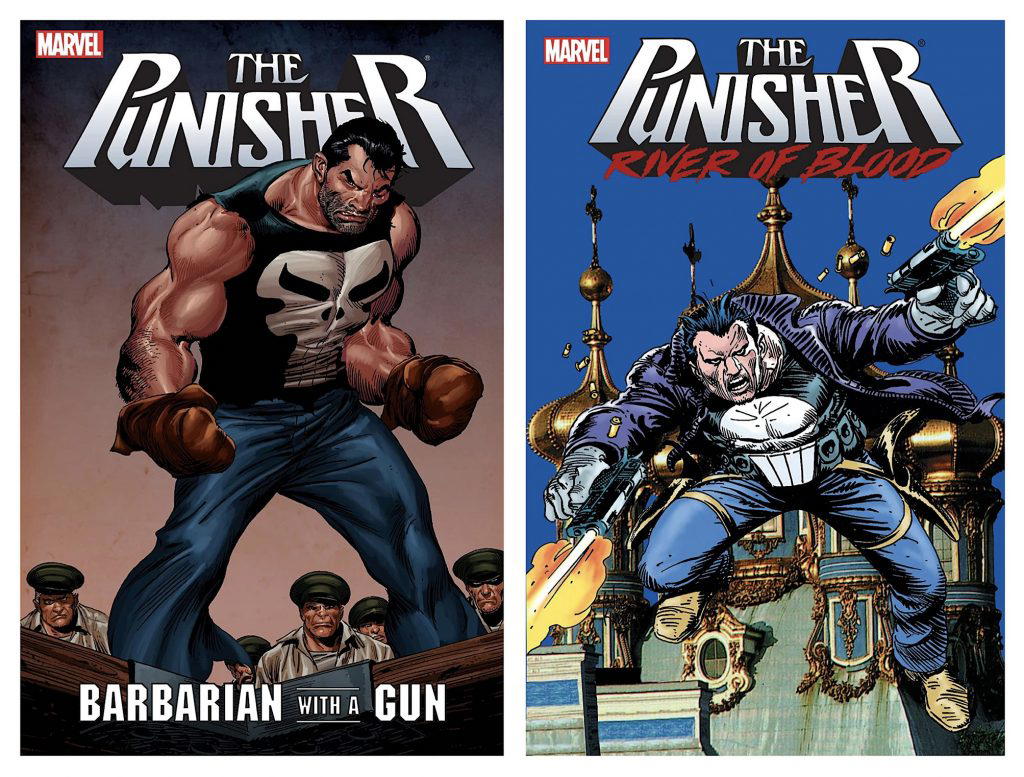
If you want to enjoy Barbarian With A Gun, and yes you do, your options are many! There’s the original 5 issues — the comic was called The Punisher War Zone, issues 26-30, from 1994; not the Punisher: War Zone comic series from 2008 or the other one from 2012. Not confusing enough, I know. Those are good Punisher comics but not the ones from this review. And I haven’t brought it up until now, but here goes: the covers are not the same awesome as the interiors. In their wisdom, Marvel commissioned cover art for all 5 issues from someone who was …just not John Buscema. Not bad, just a very different art style and so, maybe a little startling. Just sayin’.
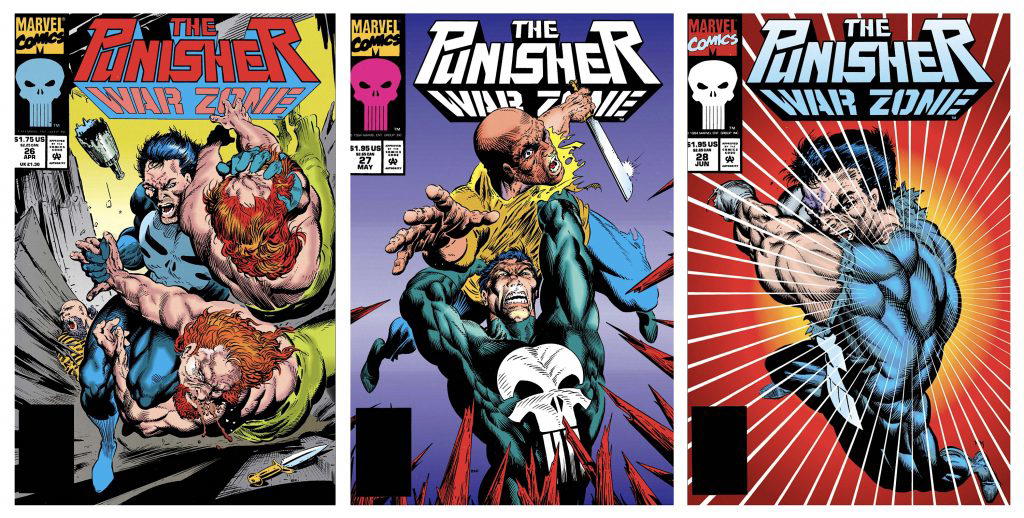
The collected edition trade paperback is under the name Punisher: Barbarian With A Gun (and an interior splash page serves as the new cover!) and shouldn’t be too hard to find either. Digital fans can read this (and the Joe Kubert story!) as part of their Marvel Unlimited membership, and e-copies are available for lease at Comixology/Amazon Comics.
However you read it, I hope you do find and enjoy this example of late-career John Buscema working on a character he’s not only perfect for, but has no real association with. Then come back and tell me what you think! Seriously!
That’s it for me this month, so until next time, remember! Front towards enemy!
Max Cage, 2022
Comics’ll Break Your Heart, for Shotgun Honey
The island of Puerto Dulce’s name means “Sweet Port,” but there’s nothing sweet about getting skewered on sugar cane! The Punisher’s been enslaved in a Caribbean jungle – and escape means going through prisoners, revolutionaries, and alligators! Will he catch his drug-dealing quarry before their shared enemies beat him to it?

Max Cage is the heroic alter ago of the mild-mannered reviewer and commentator of comics, crime and all manner of pulp. He knows you have better things to do than read his musings but can’t imagine exactly what that could be.